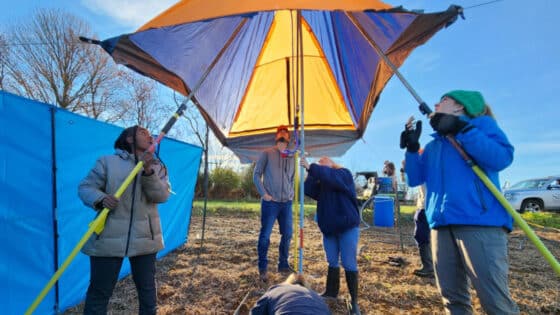Daniels, M.D., and B.L. Rhoads. 2003. Geomorphology 51:159–173.
doi: 10.1016/S0169-555X(02)00334-3
Abstract
A field experiment has been conducted to assess the influence of a large woody debris (LWD) obstruction on three-dimensional flow through a meander bend of a small stream in east central Illinois. Previous studies in unobstructed meander bends have shown that flow through a curved channel should develop a coherent three-dimensional structure characterized by large-scale helical motion. Many meander bends are complicated by naturally occurring persistent obstacles, such as LWD, that have the potential to profoundly disrupt flow structure. The results of this study show that the LWD obstruction systematically influences the three-dimensionality of flow through the bend, particularly the position of the high-velocity core and the development of helicity. The high-velocity core is positioned in the center of the channel upstream of and near the bend apex, but as flow approaches the LWD, it is steered toward the inner bank by the obstruction. Evolving helicity in the upstream portion of the bend is amplified by abrupt turning of the flow induced by the LWD. As the flow moves past the LWD, helicity diminishes rapidly and may even reverse its pattern of rotation. The net effect of the LWD obstruction is to reduce near-bank velocities along the outer bank downstream of the bend apex—a critical locus for bank erosion in meander bends. Given the persistence of the LWD obstruction, it probably has an important local influence on bend migration and evolution.


